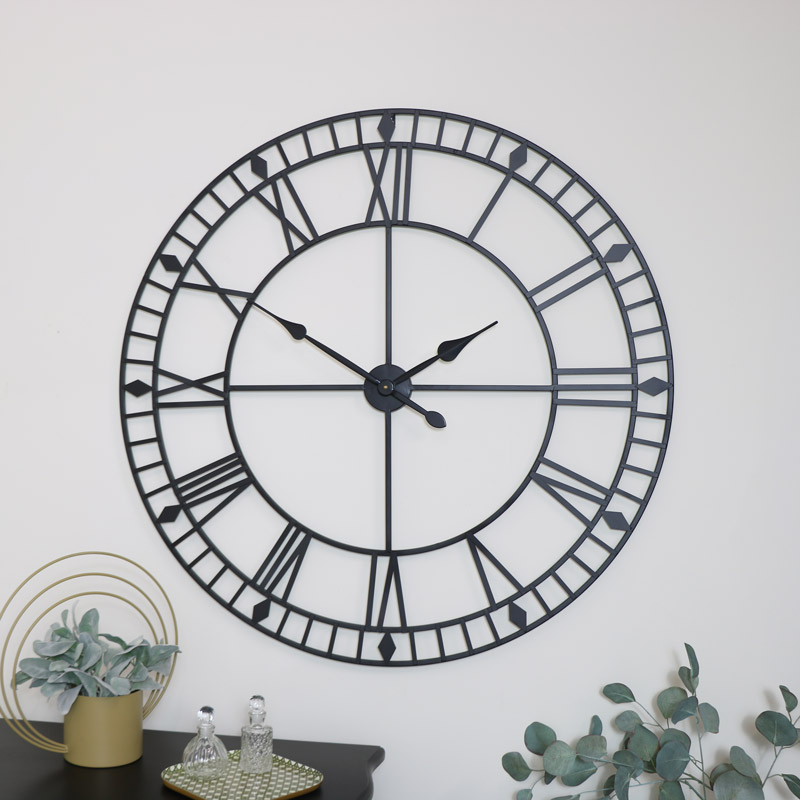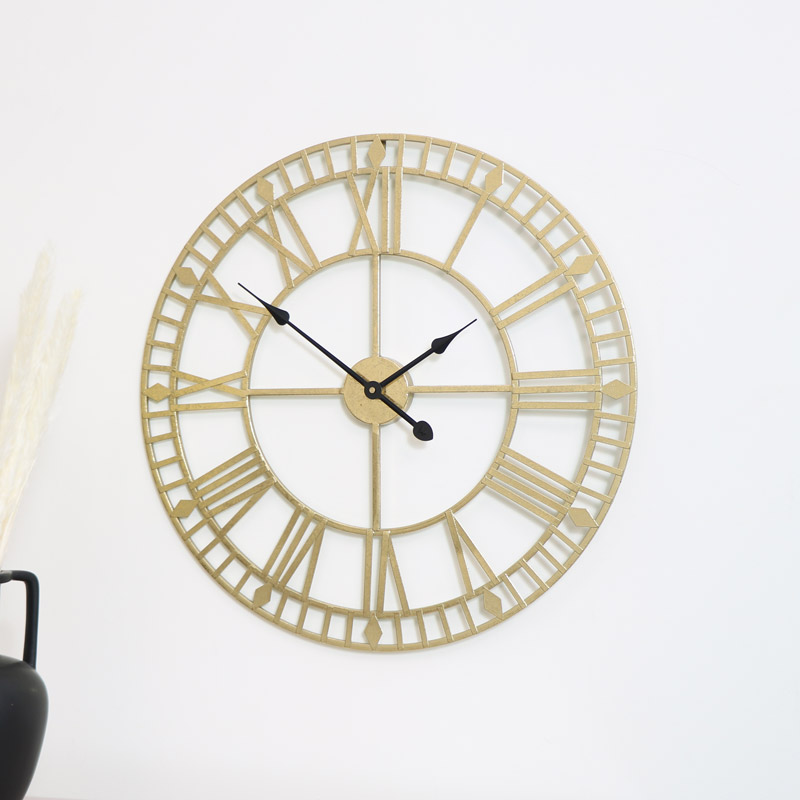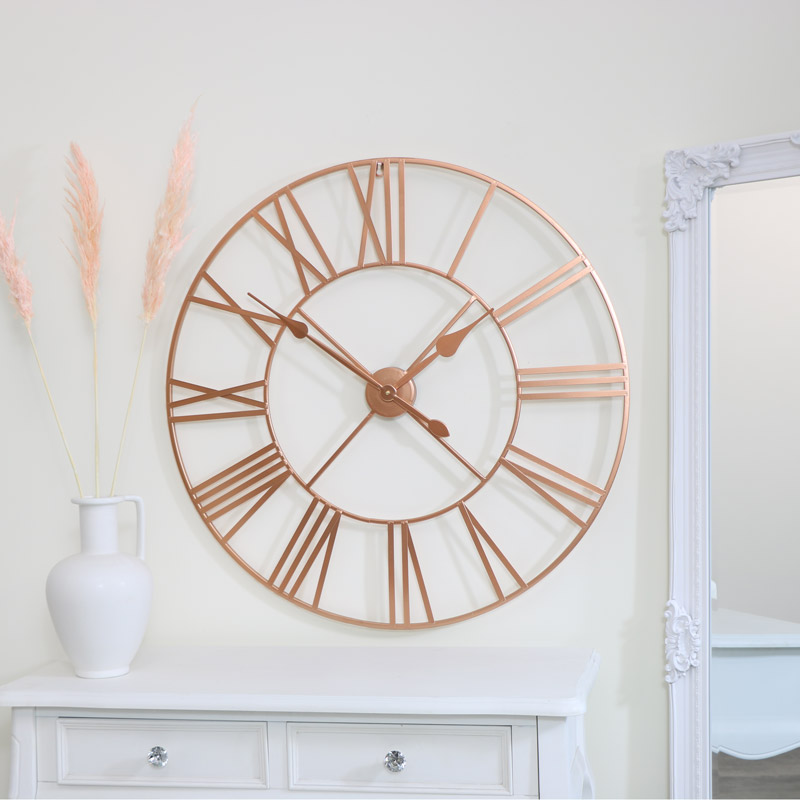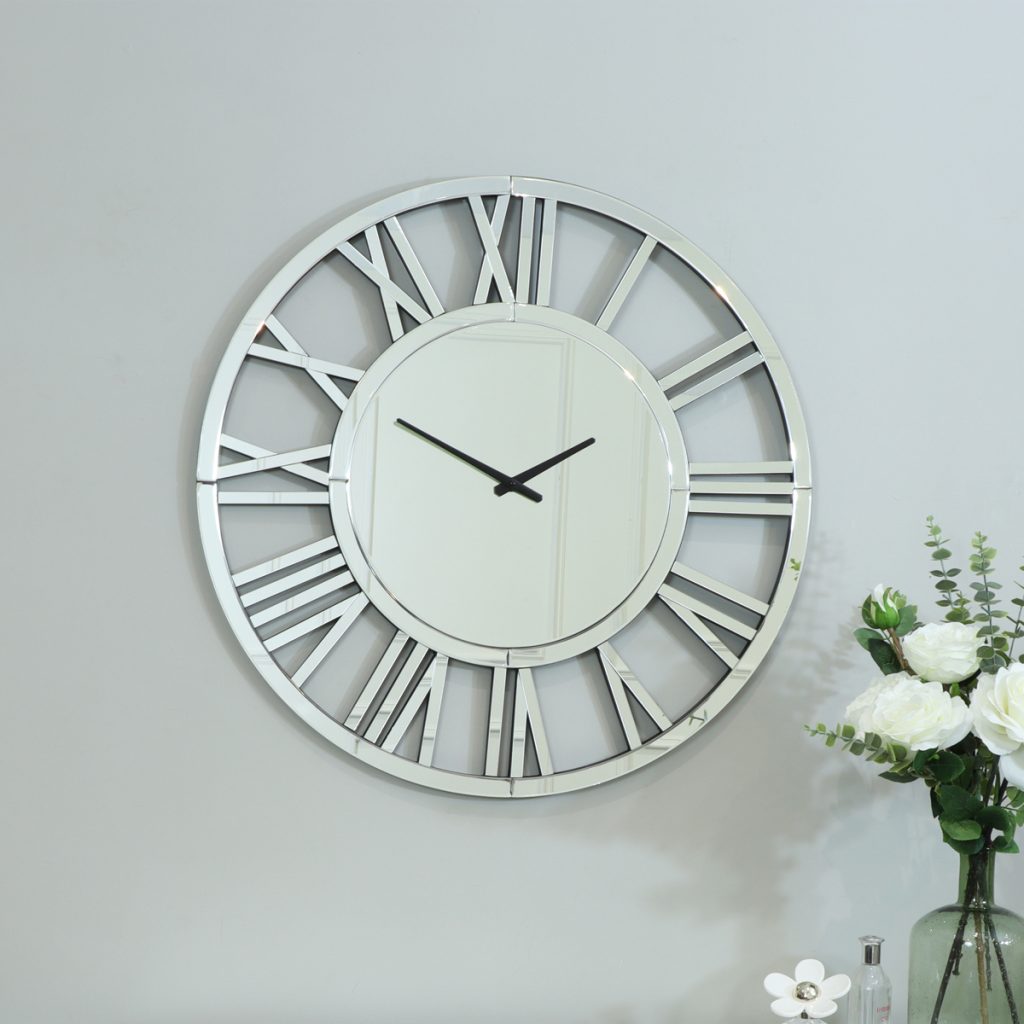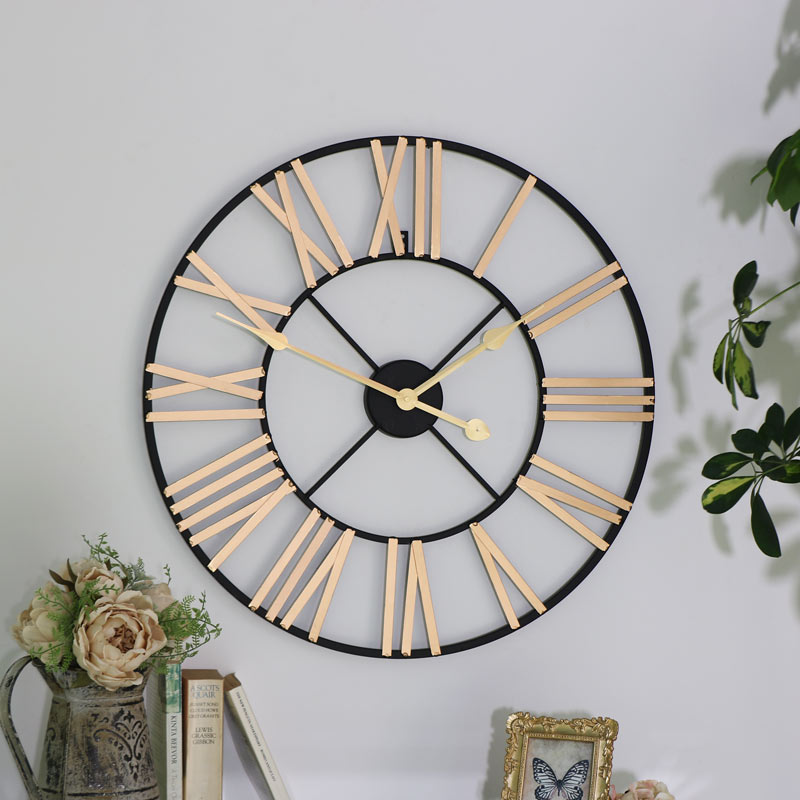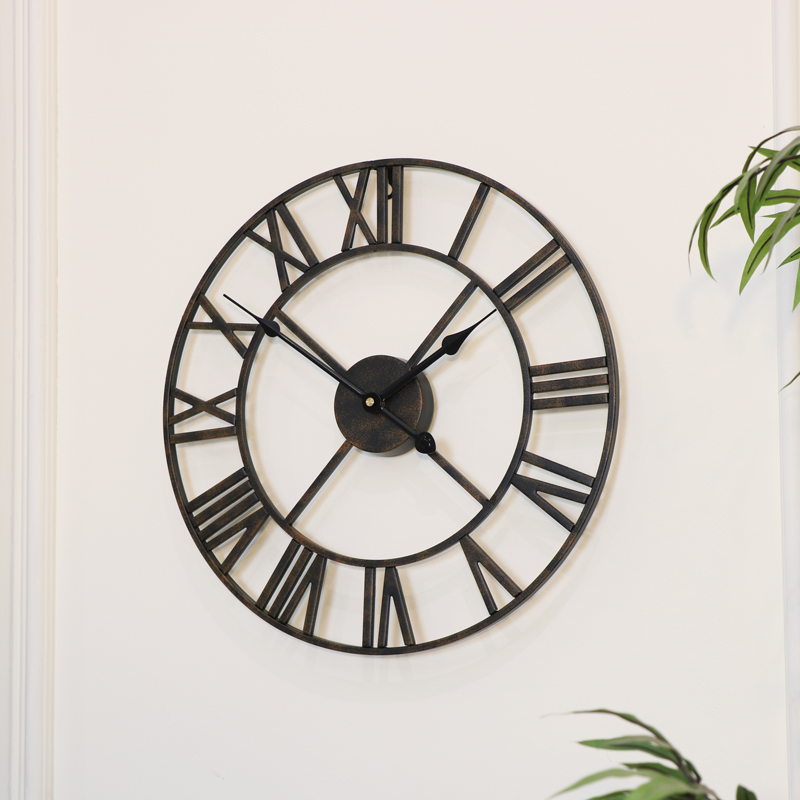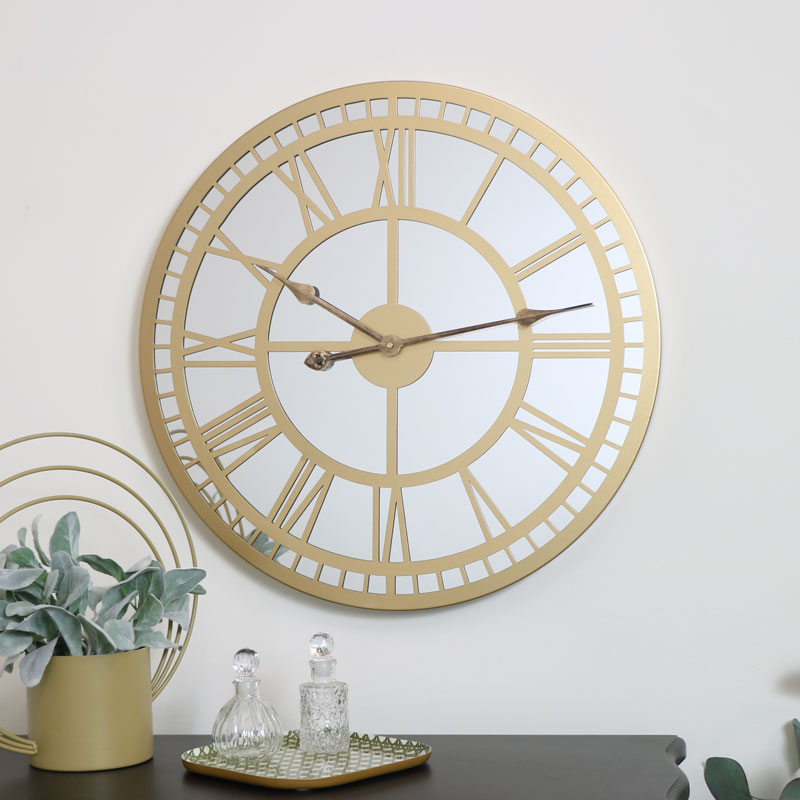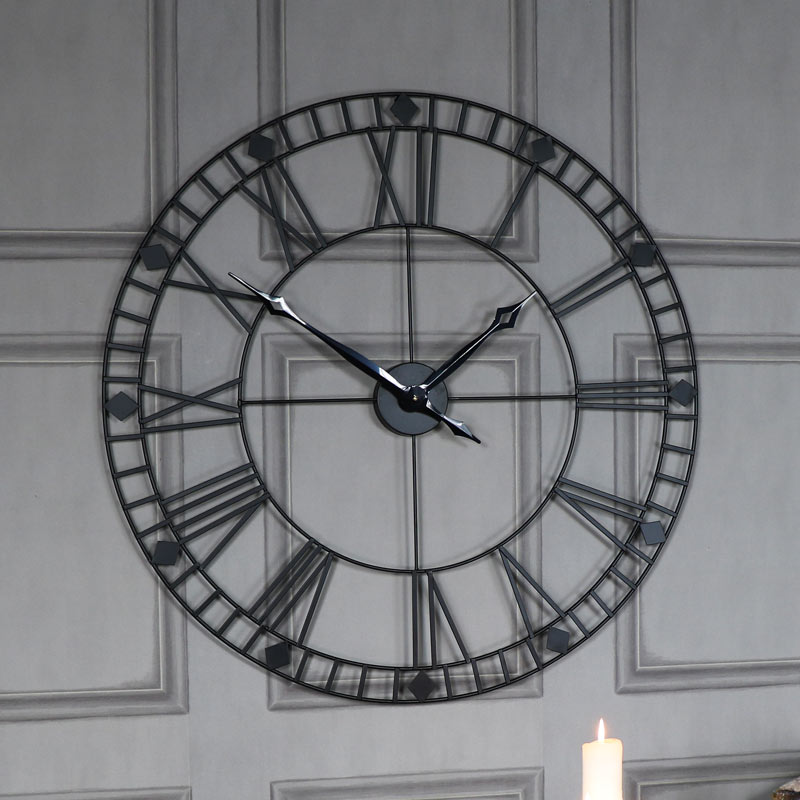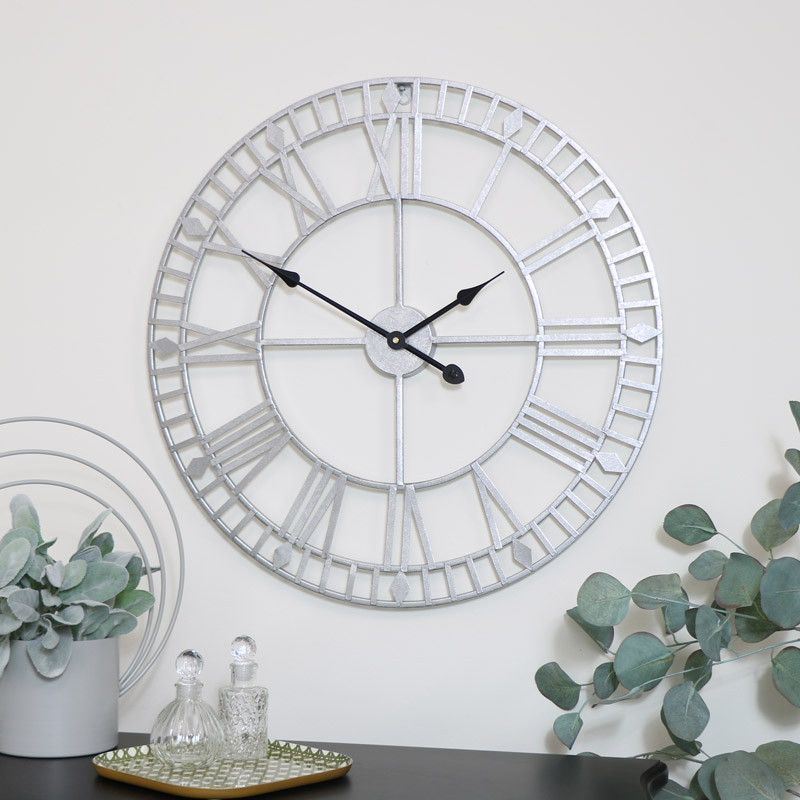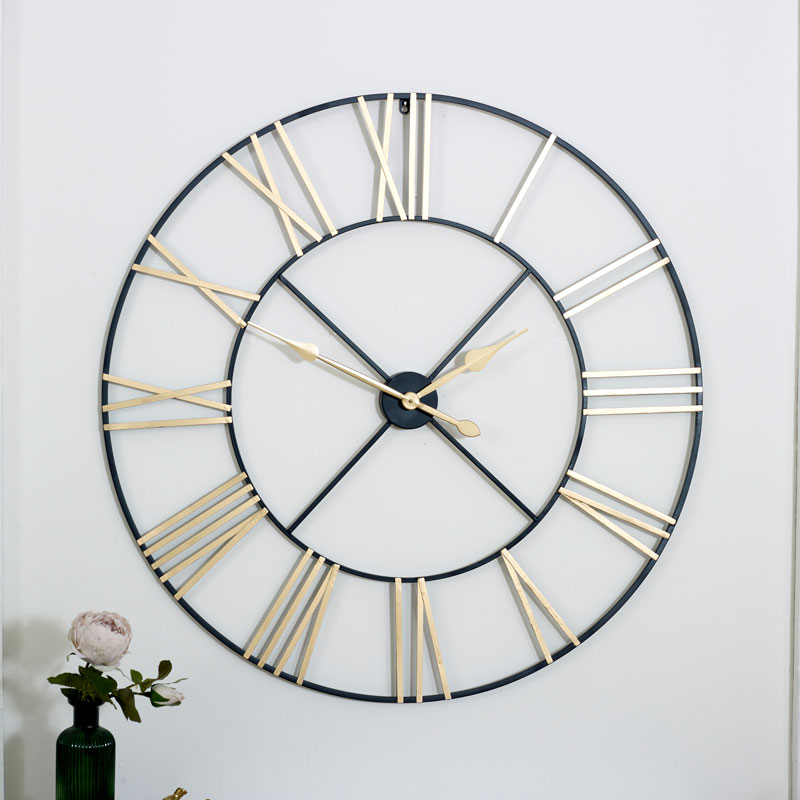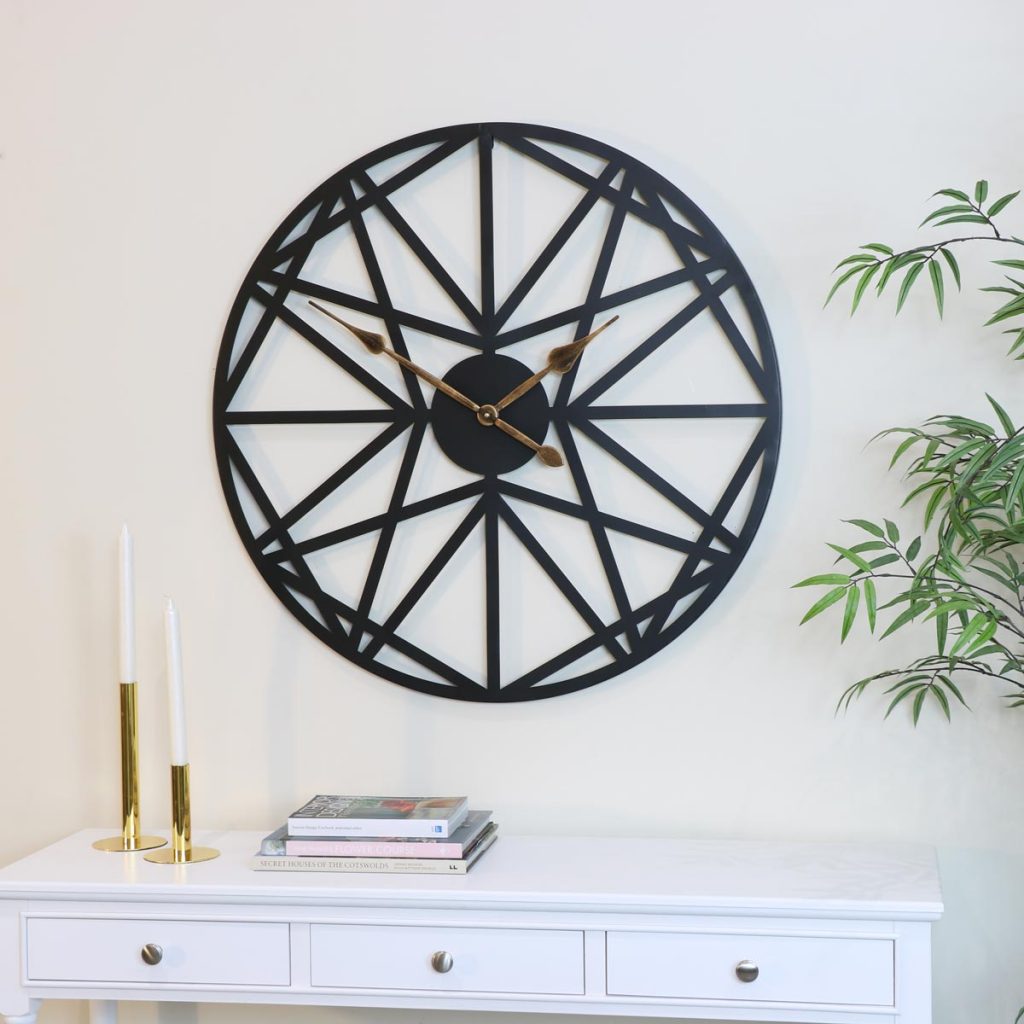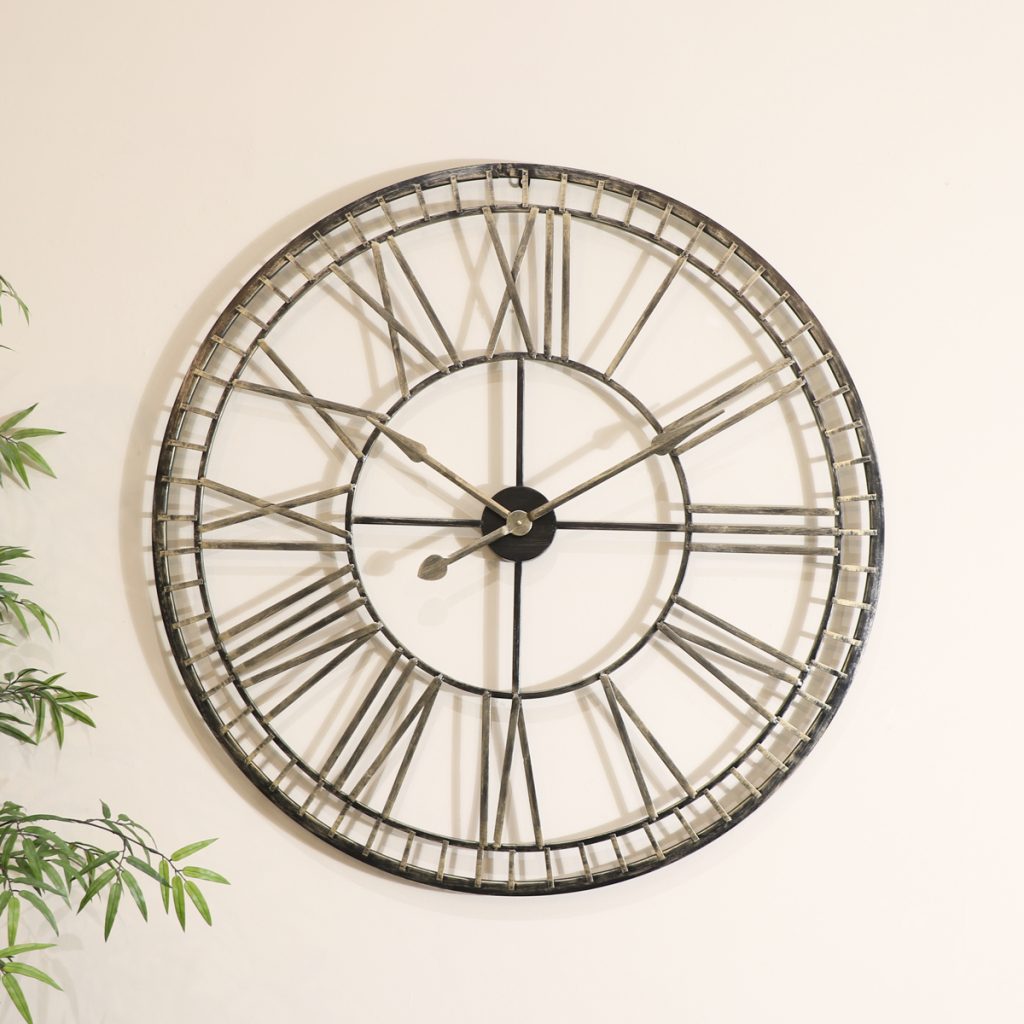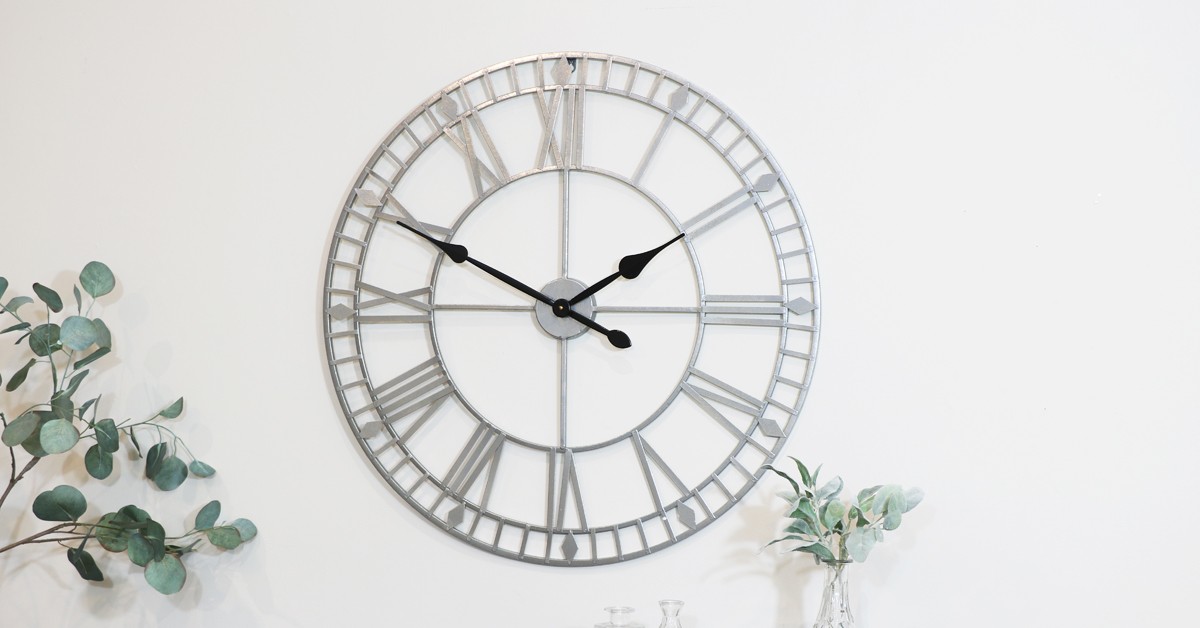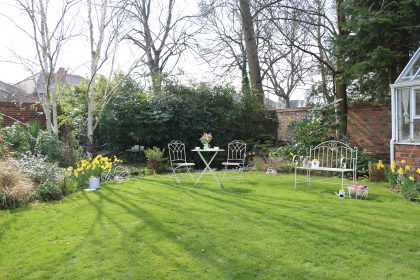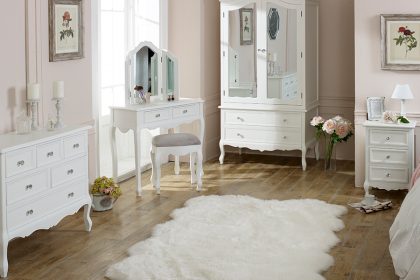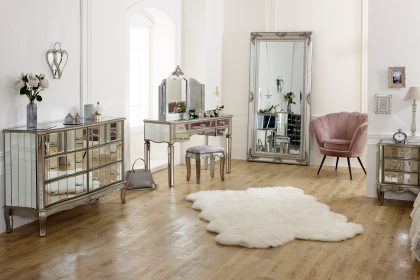Wall Clocks aren’t just a way to tell the time, they’re also one of the most popular types of wall decor!
The right wall clock, in the right place, in the right style can completely change the vibe of your room. But how do you make sure you’ve chosen the right one?
We’ve put together our most asked questions about Clocks, to help you make the perfect choice!
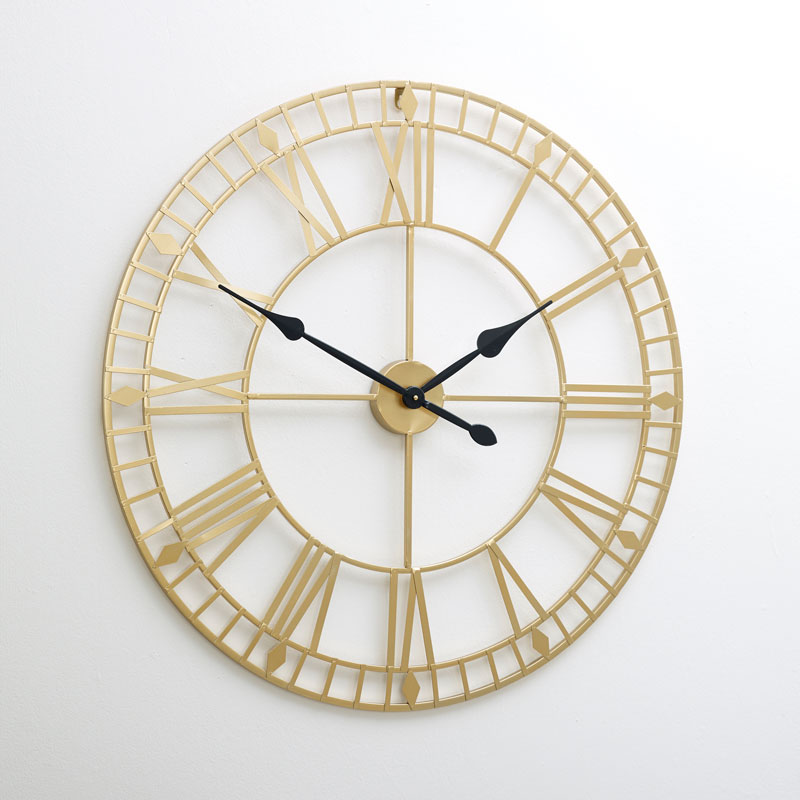
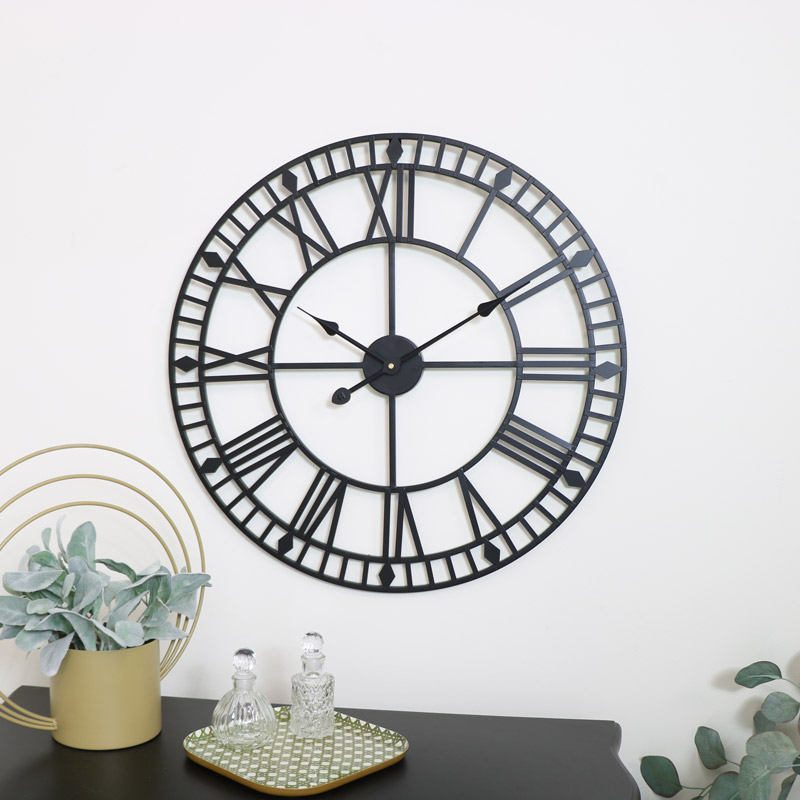
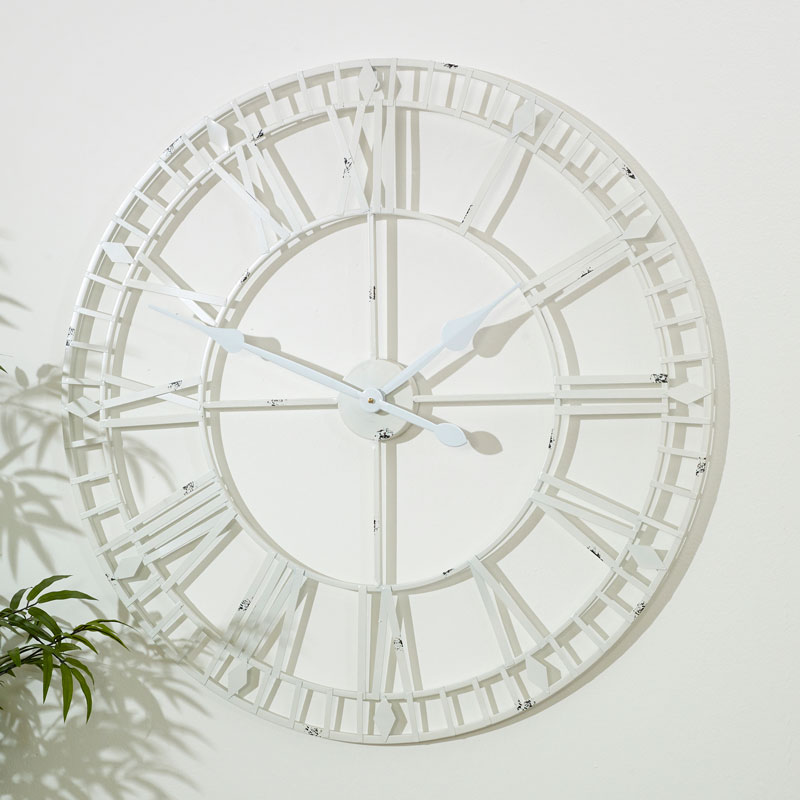
1.) How big should a clock be on a wall?
Before you decide what size of clock you need to purchase, you should first decide where your clock is going to be placed.
Firstly, measure the size of the blank wall space you have to work with. Once you have these measurements, you can decide on the size of wall clock you need.
A small wall clock is characterised by being around 30cm – 40cm, a Medium wall clock is around 40cm – 60cm and a Large wall clock would be sizes between 60cm to 80cm. For Extra Large wall clocks, anything above 80cm right up to 140cm would be classed as this, or even described as oversized.
The general rule for interior design is that any type of wall decor should cover about 2/3rds or 3/4ths of the available wall space. Make sure you stick to this rule if you don’t want want your clock to overwhelm, or get lost in, in your desired space.
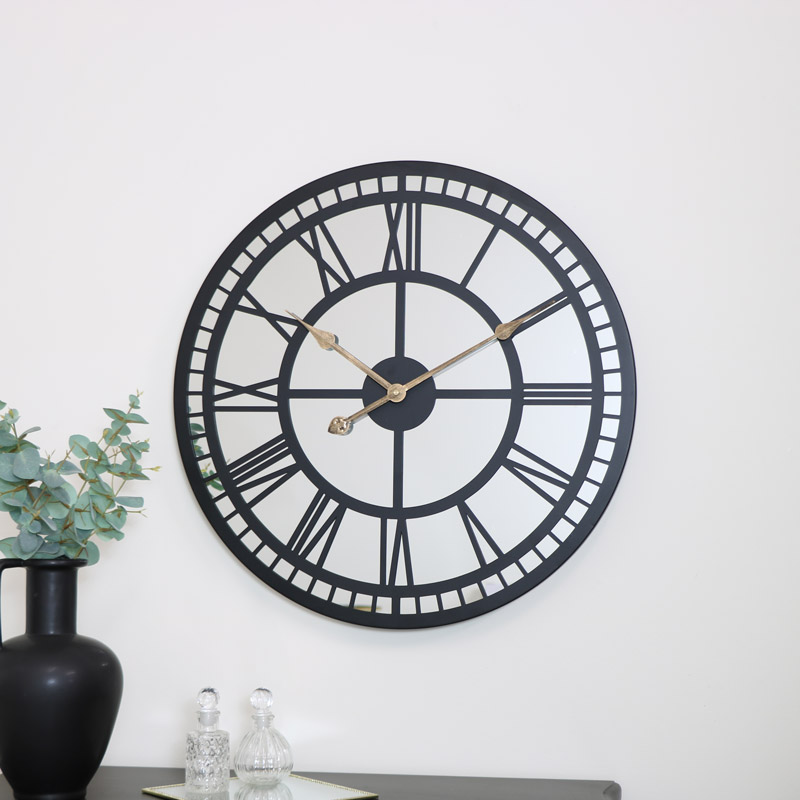
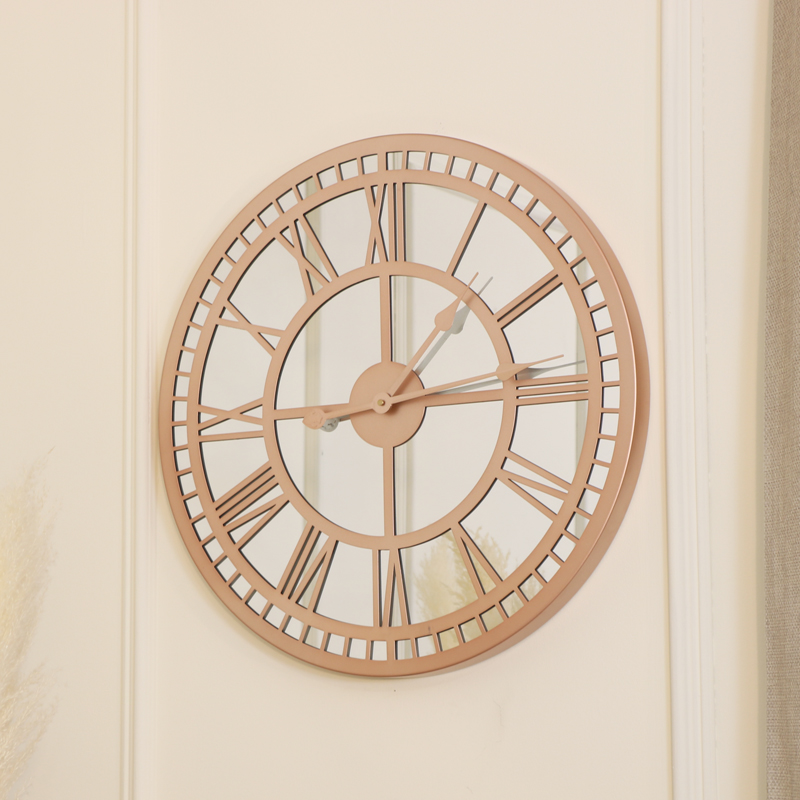
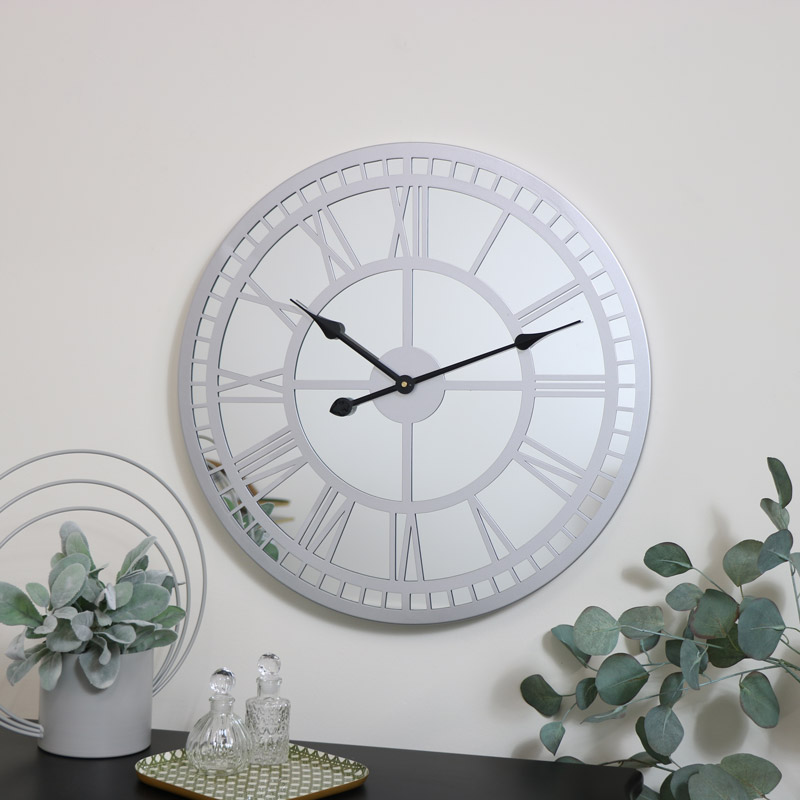
2.) How high should a clock be on a wall?
How high you place your wall clock on the wall depends on why you are mounting it.
Do you have a totally blank space? Is the clock being placed above a console table? Is the clock the focal point over a fireplace?
What is the purpose of the wall clock? Have you purchased it for actual time keeping or as a decorative piece?
Consider these questions before you start placing your clock on the wall.
Ultimately, it comes down to two options. Your clock should be between your eye level and your chest level, so it is immediately in view when you need to tell the time. Alternatively, it could be mounted above eye level. However if you choose this option it is best to make sure the top of your clock is the higher than the tallest piece of decor in the room, else visually it will look a little strange.
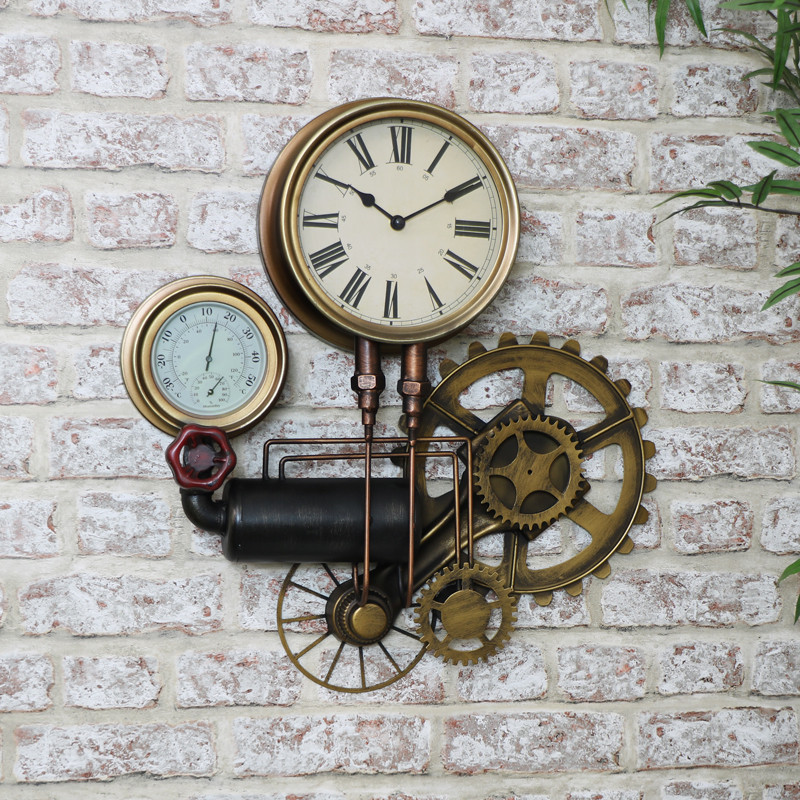
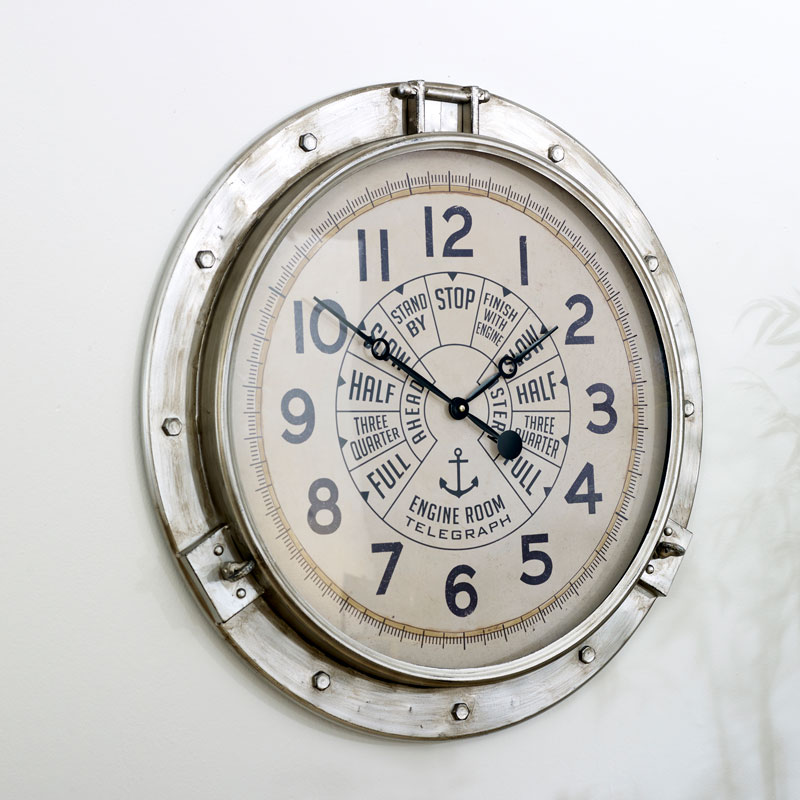
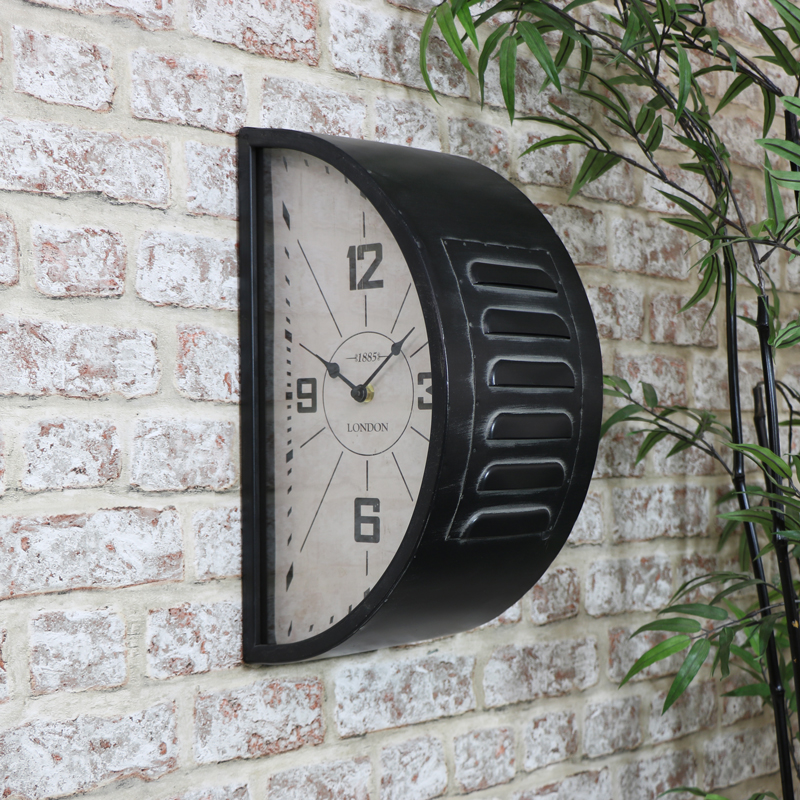
3.) Where should a clock be placed in a home?
Clocks work well in most spaces and rooms, however you need to consider if just because a lock could fit in a space, does the space really need a clock?
In our opinion, clocks work best in large, more open spaces, especially when they are used as a feature decor piece.
Hallways and entryways are fantastic spaces for a clock!
These spaces are often narrower than most rooms in a home, so it can often be a struggle to fill the space you have without it ending up looking cluttered.
This is where a large or oversized clock really shines. They can fill up the space and add an interesting element for the eye, while not taking up any of that all important floor space!
Alternatively, think of what the actual practical use for a clock is; it’s a way to keep on track of the time!
In this instance, kitchens are a great palace for a smaller sized clock. As the heart of the home, a kitchen is where the family tends to congregate in a morning, therefore this is the space you are most likely in need of an easy to see timekeeping piece, to make sure you’re on time for work or the school run!
However, one of the places where a clock is most often featured is in a living room. In this space, the clock is both a practical and a decorative decor choice.
Often placed over a fireplace or above a sofa, in this space a medium or large sized clock is used most often. If you have a gallery wall in your living room, you can easily incorporate a clock into this feature wall.
View more clock options:
